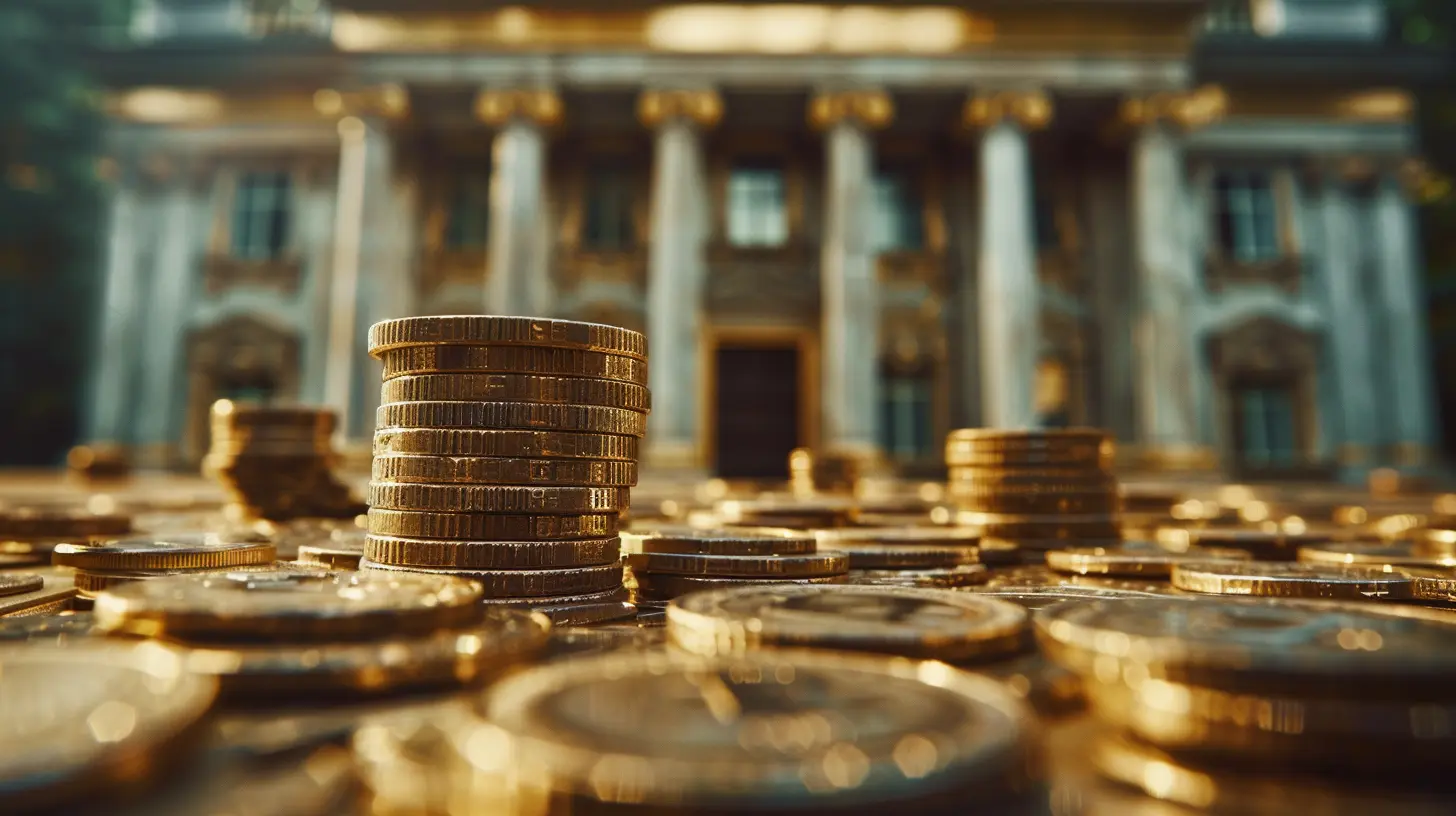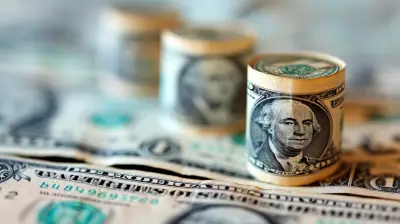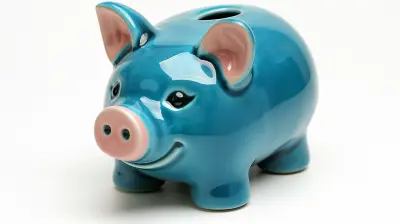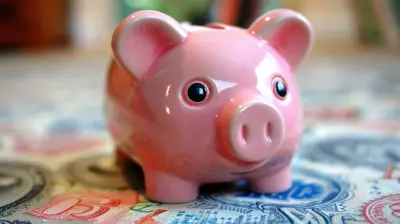10 February 2025
Let’s talk about something we don’t often think about enough—interest rates. Sure, they sound boring, like something you’d hear about in an economics lecture or read on a dry, jargon-filled financial report. But here’s the thing: Interest rates have a huge impact on your day-to-day life, even if you don’t realize it. Low interest rates might feel like a win in the short term—cheaper loans, manageable mortgage payments, and all that jazz. But what about the long-term? Are ultra-low interest rates all rainbows and unicorns, or is there a catch waiting around the corner?
Well, buckle up because we’re going to dive deep into the long-term consequences of ultra-low interest rates today. And trust me, by the end of this, you’ll have a clear understanding of how these seemingly small percentages shape our economy and your financial future.
What Are Ultra-Low Interest Rates?
Before we start dissecting the consequences, let’s make sure we’re on the same page about what ultra-low interest rates actually are. Interest rates are the cost of borrowing money. They’re set by central banks (like the Federal Reserve in the U.S. or the European Central Bank), and they play a key role in the economy. When we say "ultra-low interest rates," we’re talking about rates that hover near zero—sometimes even below zero (yes, negative interest rates are a thing).Central banks lower interest rates to stimulate economic growth, especially during times of crisis. Think back to the 2008 financial meltdown or the COVID-19 pandemic. Those were times when central banks slashed rates to encourage borrowing, boost spending, and keep the wheels of the economy turning. Sounds great, right? Except… it’s not all sunshine and roses.
The Short-Term Benefits of Ultra-Low Interest Rates
Let’s start with the good stuff—because, in the short term, ultra-low interest rates can feel like winning the lottery.1. Cheap Borrowing Costs
Ever taken out a loan during a period of low interest rates? If so, you probably noticed how “cheap” it felt. Mortgages, car loans, and even business loans become incredibly affordable. It’s like getting your favorite product on sale—it’s tough to resist!2. Boosted Consumer Spending
When borrowing is cheap, people are encouraged to spend. That dream of renovating your kitchen? Suddenly doable with an affordable home equity line of credit. Businesses also invest more because credit is less expensive. All this spending boosts the overall economy in the short term.3. Rising Asset Prices
Ultra-low interest rates make other investments, like stocks or property, more attractive. Why park your money in a boring old savings account with almost zero returns when you can invest in a booming stock market? This rush of money into assets typically inflates their prices—great news for existing homeowners or investors.So far, so good, right? Who wouldn’t want a world where money is easy to borrow, assets are booming, and spending is up? But hold your horses—this is where things start to get tricky.
The Hidden Long-Term Costs of Ultra-Low Interest Rates
Ultra-low interest rates come with trade-offs. While they may offer short-term gains, they can leave behind some serious long-term consequences. Think of it like bingeing on junk food—it feels awesome in the moment, but the long-term effects aren’t quite as pleasant.1. Distorted Savings Behavior
Ultra-low interest rates can discourage saving. Why stash your money in a savings account when the returns are laughable? It’s like trying to grow plants in the desert—no matter how much you water them, they just won’t flourish.When saving becomes unattractive, people are forced to look elsewhere—riskier investments like stocks or real estate. While that might work out for some, it also means folks might end up putting their money in places they don’t fully understand, exposing themselves to potential losses.
2. Asset Bubbles
Remember how low interest rates push up asset prices? That’s great until it’s not. When assets like housing or stocks become overvalued, you’re looking at the makings of a bubble. And if you’ve ever seen a bubble pop—whether it’s a housing market crash or a stock market downturn—you know it isn’t pretty.Take the 2008 financial crisis, for example. Low interest rates in the early 2000s contributed to a housing bubble. When that bubble burst, it led to a global economic meltdown. Ultra-low rates today could pave the way for similar problems tomorrow.
3. Debt Addiction
Here’s the thing—cheap borrowing can quickly turn into a bad habit. Governments, consumers, and businesses all build up mountains of debt during periods of low interest rates because, hey, why not? It’s cheap! But when interest rates eventually rise (and they almost always do), paying off that debt becomes way harder. Imagine taking out a credit card with a super-low introductory rate, only to get hit by sky-high interest later. Ouch.4. Hurting Pension Funds and Retirees
Here’s a group that really feels the pinch: retirees and anyone relying on fixed-income investments. Ultra-low rates mean the returns on bonds and other safe investments drop to near-nothing. It’s like trying to live off minimum wage in a high-rent city—it just doesn’t add up. Pension funds, which often rely on steady returns from bonds, also struggle. This can create long-term financial challenges for retirees and the institutions supporting them.5. Zombie Companies
Ultra-low interest rates can keep struggling businesses alive—companies that would normally fail in a higher-rate environment. While that might sound like a good thing (hooray for jobs!), it actually clogs up the economy. These "zombie companies" suck up resources that could be better used by more productive businesses, stifling innovation and growth.6. Weaker Monetary Policy Tools
When interest rates are already ultra-low, central banks lose one of their most important tools. Normally, when the economy hits a rough patch, central banks cut interest rates to stimulate growth. But what happens when rates are already at rock bottom? There’s not much room left to maneuver, which can leave economies vulnerable during crises.
What Does This Mean for You?
Alright, so we’ve looked at the bigger picture, but let’s bring this closer to home. What do ultra-low interest rates mean for you personally? Here’s the bottom line:- Borrow Wisely: If you’re taking advantage of low rates, great! But don’t bite off more debt than you can chew—remember, rates won’t stay low forever.
- Diversify Your Investments: Don’t park all your money in one type of asset. Diversifying can help you weather financial storms if (or when) bubbles burst.
- Save Strategically: Even though savings accounts might not offer much return right now, saving remains important. Explore alternatives like high-yield accounts or other lower-risk options to keep your financial future secure.
- Plan for the Long Term: Be aware of how ultra-low rates could impact your retirement goals, especially if you’re counting on fixed-income investments. Adapt your plan accordingly.
Wrapping It Up
Ultra-low interest rates are like a double-edged sword. On one hand, they make borrowing cheaper, encourage spending, and boost asset prices. On the other hand, they discourage saving, fuel asset bubbles, encourage debt addiction, and weaken our economic defenses.While they might feel like a blessing in the short term, the long-term consequences can be sobering. So, next time you hear someone say, "Interest rates are at an all-time low!"—give it some thought. Is this a short-lived win, or are we setting ourselves up for trouble down the line?










Kai Adams
Ultra-low interest rates may seem beneficial now, but they risk distorting markets and eroding savings in the long run. Let’s embrace prudent financial practices and prepare for a future where stability and growth thrive together!
March 27, 2025 at 9:51 PM